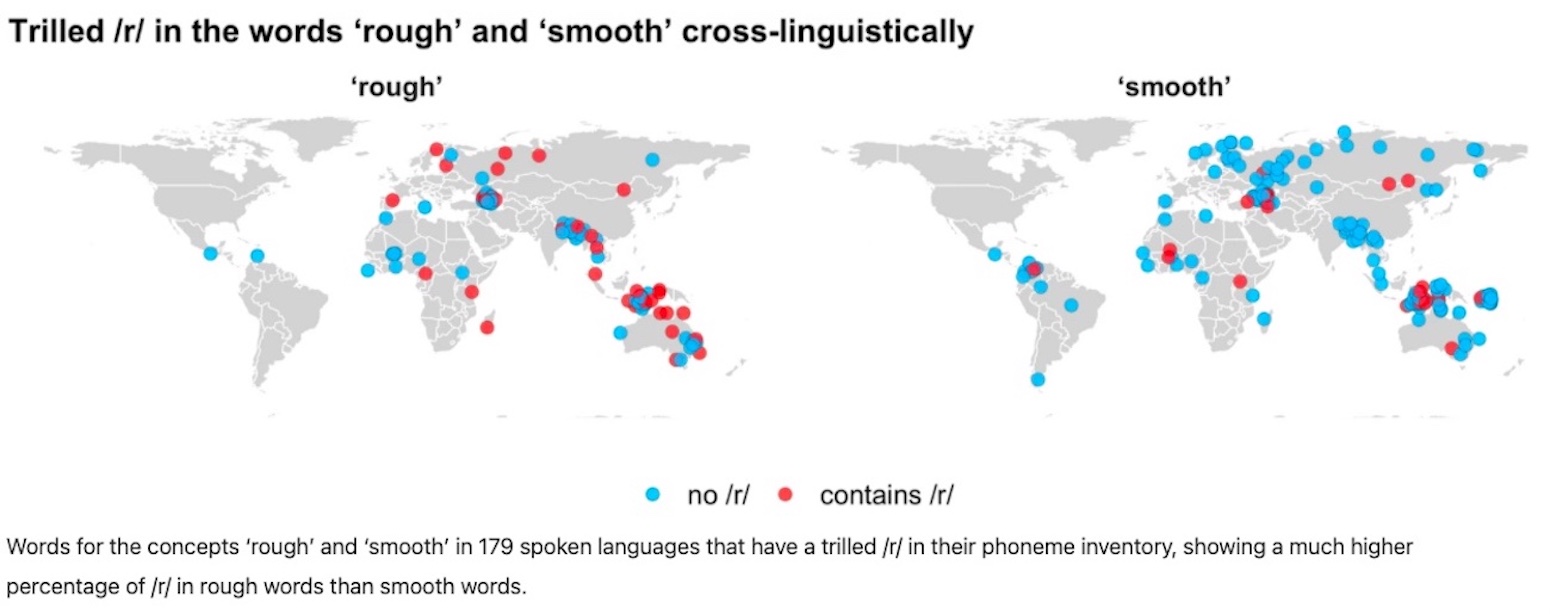Turns out, some words are more tactile than you might expect.
That’s according to a new global study noting a clear linguistic connection between sound and touch.
The study found that words meaning “rough” were four times more likely to contain a rolled or trilled ‘r’ sound than words that mean “smooth.” The researchers detected this relationship in a sample of 332 spoken languages around the world, including words like zakarra (Basque), barzgar (Mongolian), ruw (Dutch) and durva (Hungarian). In the Indo-European language family, where the pattern is especially strong, it could date back more than 6,000 years.
We asked UBC associate professor Dr. Márton Sóskuthy (he/him) about the study, which he co-authored with an international research team that included lead author Dr. Bodo Winter and Dr. Marcus Perlman of University of Birmingham, and Dr. Mark Dingemanse of Radboud University.
How did this discovery come about?
Dr. Winter had found this pattern connecting ‘r’ with rough words in English. Then at some point he and I had a chat, and, based on a hunch, decided to check if it was also there in Hungarian. Sure enough, it was there, and just as strong as in English.
Next, we found it was there in pretty much every Indo-European language we could lay our hands on. We thought the logical next step was to look outside of that language family. That’s when we discovered that yes, it’s there, but only in languages with trilled ‘r’s. Outside of Indo-European, languages with a different kind of ‘r’ simply don’t show the pattern.
Why is this important?
In spoken language, we have lots of examples of onomatopoeia—where a word that refers to a sound actually imitates that sound, like "woof woof" for a dog or "cock a doodle doo" for a rooster.
This trilled ‘r’ pattern is more intriguing in that it’s an example of what we call cross-modal iconicity. Iconicity is simply a similarity between the form and the meaning of a word—like the “woof woof” example. Cross-modal iconicity is when the meaning and the form are in different modalities or senses: in our example, touch for the meaning and sound for the form.
There is something intuitive about how the unevenness of a rough surface is reflected in the repetitive and noisy sound of a trilled ‘r’. It’s exciting to see this link show up in the vocabularies of so many spoken languages.
This study shows that many aspects of language structure are shaped by the human ability to spot and use perceptual analogies that create iconic links between form and meaning.
What about English? There’s no trilled ‘r’ but it fits the pattern with words like ‘rough,’ ‘course’ or ‘gnarled.’
Yes, English is a really interesting example. We know that the ‘r’ sound in English used to be different. If you go back a few hundred years, it’s very likely English also had a trilled ‘r’ and you can still find remnants of this—just think of a Scottish stage accent, for instance.
What does this finding reveal about communication?
This pattern reveals some interesting aspects of cognition: how our tendency to produce cross-modal analogies in speech can find its way into spoken language vocabularies. And once it’s there, it stays there.
In the Indo-European language family, we found evidence that the trilled ‘r’ for rough pattern was happening 6,000 years ago—and it’s still happening. So for us, the stability of the pattern is really interesting.
Here’s an instance where we are talking about some property of a sound, the trilled ‘r,’ and we’re finding a connection with something that’s massively outside the sound system—we’re talking about touch.
Every language is different but they do share things with each other. It’s always interesting to find these connections.
This Q&A was written by UBC Media Relations and has been reposted to the Language Sciences website.
